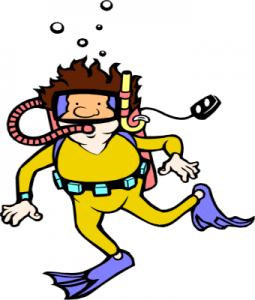Aug 24th, 2008 by Frank LaBanca, Ed.D.
 I had the exciting opportunity to complete my open-water PADI scuba certification this past weekend in Dutch Springs, PA. My wife and I decided to celebrate our doctoral graduations by completing the open water program together. We did our coursework with an amazing teacher, Bruce. I had the opportunity to observe him and carefully evaluate the way he taught. Specifically, Bruce, although probably never had heard the term, had a strong understanding of androgony.
I had the exciting opportunity to complete my open-water PADI scuba certification this past weekend in Dutch Springs, PA. My wife and I decided to celebrate our doctoral graduations by completing the open water program together. We did our coursework with an amazing teacher, Bruce. I had the opportunity to observe him and carefully evaluate the way he taught. Specifically, Bruce, although probably never had heard the term, had a strong understanding of androgony.
He was collaborative, supportive, casual, and well informed. He understood his content impeccably, but more importantly, he understood his students: adults who had elected to learn something brand new and exciting. He clearly recognized that these were new skills for students and that we would often struggle with them. However, he knew that we needed the necessary positive support to become successful.
When we went for our open water dives, Bruce switched with another teacher, John. Bruce conducted advanced open water dives, while John completed our open waters. John has a very different disposition from Bruce. He’s a bit more gruff and curt. That really didn’t bother me, because each person has their own personality. However, it became evident, that the gruff behavior crossed the line of appropriate discussions with adults.
John would occasionally chastise and ridicule individuals for not “doing the right thing.” It seemed to me that John had somehow forgotten that he was a great, experienced diver, and we were inexperienced learners. We certainly couldn’t dive the way he did and we WERE going to make mistakes. Those mistakes, should have been learning experiences for use, but rather, they turned into opportunities for him to criticize us. Diving was supposed to be a supportive, exciting, new opportunity, and it was slowly turning into a drudgery. Not to mention, we were customers who had paid a fair share of money to participate in this activity.
The straw that broke the camel’s back for me was when we were completing an underwater swim at 25 feet without any markers or reference points. This was pretty hard to do – it is very disorienting. My wife and I were swimming along and we must have been on an inclined path, because after a bit, we surfaced. We tried to submerge again, but had a bit of trouble. John had everybody surface and started to rant in a very demeaning and inappropriate way.
I informed him that I did not need to be spoken to in that way. I had a few follow up lines as well. It seemed apparent that John was taken aback, but that this had happened before. His disposition immediately changed, and I think he recognized that his behavior was no longer going to be tolerated. It’s a shame too, because we had gone to enjoy ourselves and do something together. We weren’t planning on having our experience depreciated by a poor teacher.
The following day back on land, I had the opportunity to speak with the dive shop owner. I informed him of my dissatisfaction with the experience. He initially started by saying, “Well, you have to know John . .. ” My response was that I did not have to know John. I was a paying customer and this was no cheap endeavor. After a bit of a discussion, I think the owner got the point. After all, he’s not the only game in town. The real business in SCUBA occurs after the training when individuals begin to purchase the expensive equipment for themselves. We can easily pay someone else to provide us with high quality equipment with a better interest and attitude.
I think about this in terms of my teaching. I can be a very rigorous, demanding teacher, and still be compassionate. The two are not mutually exclusive. Often in public education, we are the only game in town. Does that give us license and liberty to not provide high quality, meaningful, and kind instruction? I know some teachers that act as that would be true. We can’t do that. Our students deserve better. They need to know their teachers care about them, but also demand at a very high standard.
Maybe John should think about that.